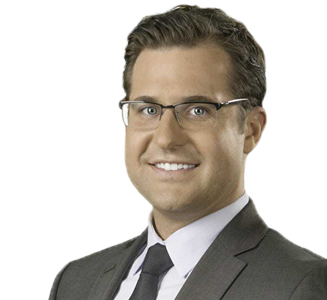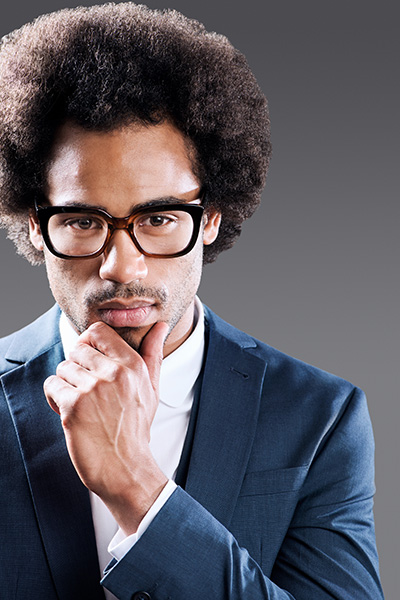Revision Rhinoplasty Burbank Los Angeles, California

Sometimes, nose surgery doesn’t go as planned. Some surgeons lack the skill to properly shape the nose, leading to functional and aesthetic problems down the line. In an attempt to shape the structures of the nose, less experienced surgeons sometimes compromised a patient’s ability to breathe or created unexpected scarring that eventually changed the contours of the nose. Other complications like an irregular nasal tip, botched implants, and excessively thinned nasal bridges required extensive rebuilding with sophisticated procedures like revision rhinoplasty.
A botched nose job can thin the nasal skin or make a nose look too bony and angular, but more importantly, it can make someone look entirely different. Two decades ago, closed rhinoplasties where the norm because they didn’t result in any visible incisions; however, these older techniques tended to gut the nose’s cartilage skeleton, meaning that while the nose looked good at first, the sides of the nasal tip eventually pinched and drooped. Some surgeons didn’t consider the fact that the nose continues to change shape after surgery. Often, this can happen years to decades after the original surgery.
Revision rhinoplasty is often much more challenging and sophisticated than primary rhinoplasty, which is why it’s essential that patients pick a surgeon with the right credentials and training. Dr. Hershcovitch is a double board certified facial plastic surgeon who has the appropriate training and experience to help patients finally achieve the nose they’ve always wanted. With a rhinoplasty expert like Dr. Hershcovitch, patients will be able to have their second nose surgery completed with the right techniques and the most advanced methods.
Dr. Hershcovitch strives to not only fix the problems caused by the previous surgery, but to create a natural, balanced outcome that looks aesthetically pleasing. Dr. Hershcovitch personalizes each revision rhinoplasty, and he will take the right approach based on the patient’s unique anatomy and concerns. To Dr. Hershcovitch, a natural appearance within the context of safety is paramount.

Double Board Certified Facial Plastic Surgeon

Who is a Candidate for a Revision Rhinoplasty?
Any patient who wants to fix the form and function of a previous nose surgery is a candidate. Ideally, our patients have waited at least a year after their initial surgery before they undergo a second nose surgery. Patients should also be in relatively good health, with no untreated cardiovascular issues or other diseases that could cause complications after surgery.
The Procedure for Revision Rhinoplasty
Your nose surgery can be completed with the external approach or and closed (endonasal). With the endonasal method, incisions are only made inside of the nose. With an external approach, an incision is made outside of the nose on bottom of the columella, the strip of skin on the bottom of the nose between the nostrils. Because the external approach allows for the greatest access of the tissues and allows the surgeon to see more of the nasal structures, it’s the best technique for a second rhinplasty. However, a few select patients may be candidates to go through an endonasal approach. Typically, the external approach is best if the nasal tip needs to be changed significantly or the nasal structures need to be strengthened. Your treatment will be performed under general anesthesia in a hospital. A revision takes slightly longer than primary nose surgery to complete—about 2-3 hours. Afterwards, you’ll be released to a family member or caretaker, and you’ll able to go home the very same day as your surgery. You’ll be given detailed recovery instructions so that you can have a successful recovery.

Schedule Your Revision Rhinoplasty Consultation Today
Whether you’re restoring normalcy to your life or perfecting your look, you shouldn’t settle for anything less than a board-certified specialist like Dr. Hershcovitch. To schedule a consultation near Burbank, fill out our contact form or call our offices.
Burbank: 818-206-2539.
Frequently Asked Questions About Revision Rhinoplasty
Assuming that your primary nose surgery was performed at the appropriate age, which is 15 years or older, you can have the revision rhinoplasty performed at any age—as long as it’s been about a year since the previous nose surgery.
We highly recommend that a family member or trusted caretaker take care of you during the first 24 hours of your recovery. To keep an eye on your recovery, Dr. Hershcovitch will see you the next day and week following the surgery.
After your revision rhinoplasty, you should expect to have small cast placed on the nose. We almost never pack the nose after surgery, because we feel we get better results and a more comfortable recovery with a cast. The cast can be removed after 5-7 days. We may also use a small piece of silastic sheeting to help the nasal mucosa, the membranes inside the nose, heal. These can be removed after a 5 days or so.
During your recovery, you will experience minor bleeding, bruising, and swelling. Patients tend to feel like their nose is congested during the first few days after their revision rhinoplasty. Some patients also experience mild headaches and bruising around the eyes. Most of the swelling and bruising will be gone a few weeks after the surgery, but residual swelling might take a year to dissipate (hence the one-year waiting period for subsequent nose surgeries). To help with healing, patients should avoid:
- Getting the nasal tape or cast wet while bathing—wait until the cast is off before taking a shower. You can carefully wash your hair over the sink if necessary and shower from the shoulders down.
- Putting glasses on the bridge of your nose for at least a month. If you need glasses, you can use tape to keep it off the bridge of your nose
- Blowing your nose during the first 2 weeks
An endonasal approach will allow patients to hide incisions inside the nose; however, most revision rhinoplasties are performed using the external approach which results in very small scar that appears on the bottom of the nose. These scars will not be visible unless someone is looking under your nose. When he’s making this incision, Dr. Hershcovitch takes great care to make sure it can heal well.
If part of your surgery involves treating breathing problems caused by botched nose surgery, then insurance will be able to pay for that part of the procedure. Otherwise, any cosmetic surgery will not be covered by insurance.
The first few days after your treatment, it’s essential that you don’t damage or hurt the nose—even when you’re sleeping. To prevent yourself from turning on your side or rolling onto your stomach, you can sleep with pillows propped up next to your sides.
